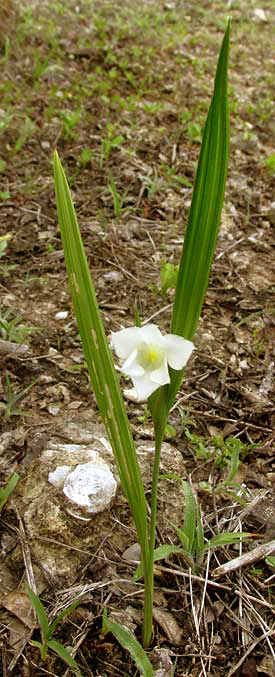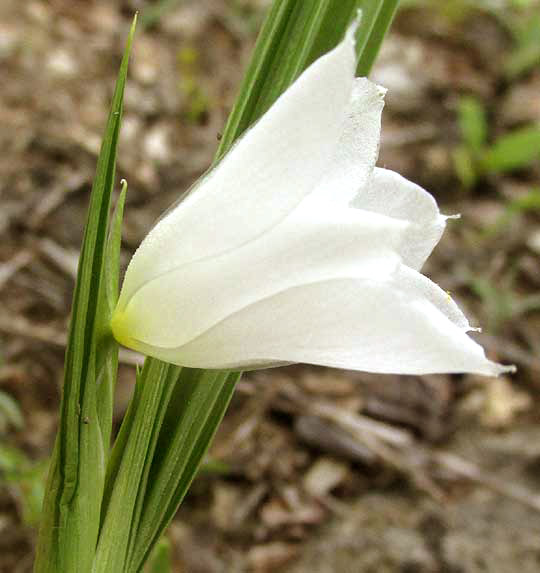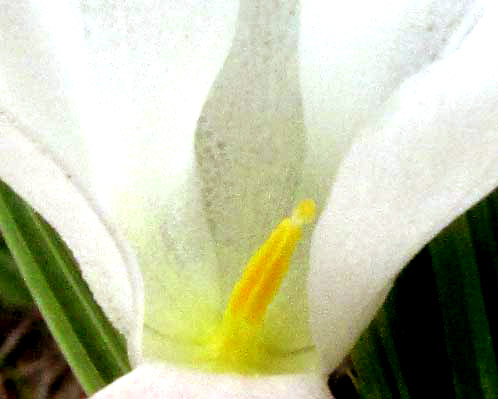Excerpts from Jim Conrad's
Naturalist Newsletter
from the July 12, 2015 Newsletter issued from Río Lagartos, on the Yucatan Peninsula's northern coast (~N21.60°, ~W88.16°), Yucatán state, MÉXICO
CIPURA
 The highlight of each of my weeks arrives late Saturday afternoon after finishing teaching an English class, when I bike south of town and camp in the mangroves. I just need at least one night a week of quietness and solitude, for Río Lagartos, as lovely and interesting as it is, is loud, hectic and claustrophobic. In the mangroves, all you hear are birds, insects (especially mosquitoes) and wind among the trees.
The highlight of each of my weeks arrives late Saturday afternoon after finishing teaching an English class, when I bike south of town and camp in the mangroves. I just need at least one night a week of quietness and solitude, for Río Lagartos, as lovely and interesting as it is, is loud, hectic and claustrophobic. In the mangroves, all you hear are birds, insects (especially mosquitoes) and wind among the trees.
Last weekend my tent was set up in an open area between mangrove thicket-groupings, or "hammocks." The spot was open because the ground consisted of flat, exposed limestone on which a little thin soil was gathered here and there, in an area sometimes flooded for extended periods. To survive in such a habitat, plants need special adaptations. Therefore, when last Sunday morning I awoke to find next to my tent a delicate, ankle-high wildflower that hadn't been flowering the evening before, I suspected that because of the difficult environment the species might be rare and maybe endemic. I could hardly wait to identify it and learn its story. You can see the little wildflower the right.
First, though, I had to "do the botany" -- which was hard that morning, because of the mosquitoes.
This was obviously a monocot-type wildflower, monocots being plants such as grasses, sedges, lilies, orchids and irises, and thus often with leaves with parallel veins instead of netted ones, and floral parts in 3s, instead of 4s and 5s, or multiples thereof. Our plant's parallel-veined leaves and three larger and three smaller "tepals" (undifferentiated corolla/sepal lobes) mark it as a monocot.
Up closer, the leaves' pleated appearance and the flower's general form was more apparent, seen ablow:

What caught my attention here was that instead of the white corolla arising above an ovary, or having its own stem, or pedicel, it emerged from the side of one bract among several folded into a spike. Bending back a tepal to see what the sexual parts looked like, a surprisingly small and simple structure was revealed, shown below:

That looks like no more than a cluster of three stamens with banana-like, yellow anthers, atop which there's a tiny, oval, yellowish thing, which surely is the stigma atop its style, the style running down through the open zone between the three anthers. Despite the presence of the stigma and style there's no hint of an ovary, so one guesses that the ovary is hidden inside the bract from which the blossom arises.
This is just the kind of flowering structure we've seen in the Iris Family up north, with the spike-forming, overlapping green bracts forming a unit -- technically known as the "rhipidium" -- from which blossoms emerge. You may recall seeing rhipidia on your garden irises. And all this is very interesting, because usually we think of the big Iris Family as producing temperate species -- though actually the family's center of diversity is tropical Africa, particularly South Africa.
Two members of the Iris Family are listed for the Yucatan, the genera Alophia and Cipura, and when I check them out it's clear that what we have is CIPURA CAMPANULATA, without any good English name, but graced with the Spanish name Cebolla de Zopilote, meaning "Vulture Onion," which is almost painful to apply to such a pretty plant, so we'll just call it Cipura. The "onion" part of the Spanish name is apt, though, because, as with many Iris Family members, the herb emerges from an onion-like bulb.
The species is distributed from central Mexico south throughout Central America, and maybe into northern South America, so it's not endemic, and it doesn't seem particularly rare, sometimes being reported from weedy roadsides and fields.
Still, when on a chilly morning you awaken in the mangroves with dew drenching your tent and the sun just breaking through the mists, there's hardly a more agreeable companion to find next to you than a fresh little Cipura.